Key Points
- A fundamental animal husbandry skill.
- Perform monthly as a routine procedure, in combination with mucous membrane colour checking. Perform more frequently in problem cases.
- Score on a scale of 1-10, where 1 is really skinny and 10 is obese. The ideal BCS is 5.5-6/10.
- Use weighing as well, to enable monitoring of young growing animals and also to facilitate correct dosing of medications.
How to Body Score Alpacas
There are 2 main sites for body condition scoring alpacas and 2 secondary sites:
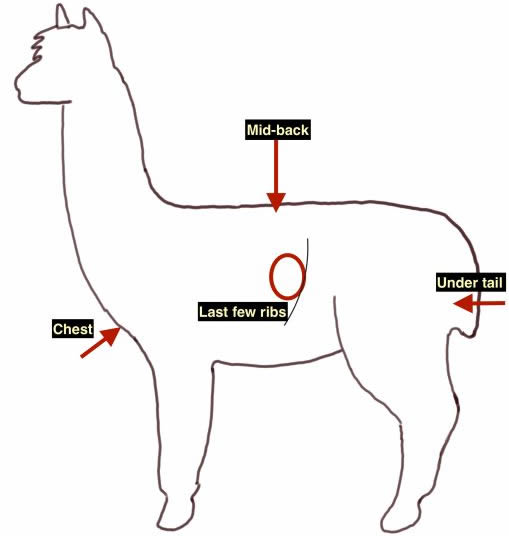
- The main area to palpate is over the mid-back, half way from the neck to the tail. Here are are palpating fat and muscle cover between the dorsal spinous processes (bony bits along the topline) and the transverse processes to which are attached the ribs.
- The 2nd site is over the last few ribs of the ribcage.
- With fatter animals, you will start to see fat padding under the tail, either side of the anus at 7.5/10, then they may start to store fat on their chests in what is known as the “brisket” area once they reach 8/10, as well as starting to deposit fat at the tops of their thighs beyond this.
- Suris will body condition score differently from Huacayas as they tend to store more fat around their backbones for insulation because of their different coat types. Also, older animals will feel different from younger animals and you can often get a better idea of their body condition by feeling the ribs. Finally, males have more muscle around the spine, so it is important to feel for rib cover to get a proper idea of their condition.
See also: How to assess for anaemia in alpacas by checking mucous membrane colour
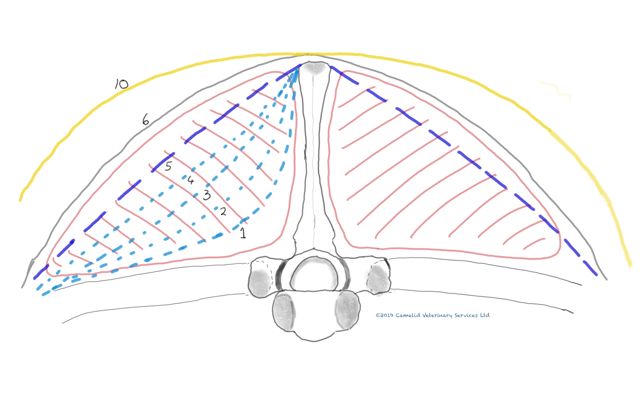
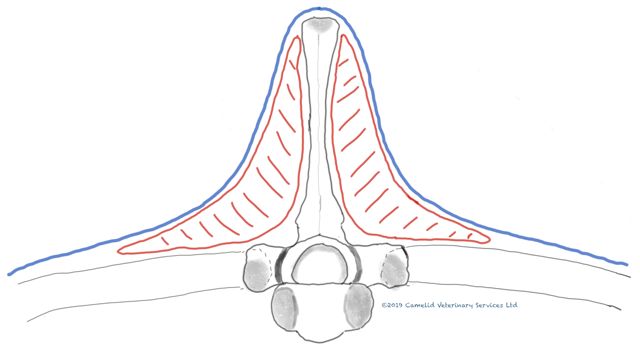
BCS 2/10, Very thin: can fit fingers easily between ribs. 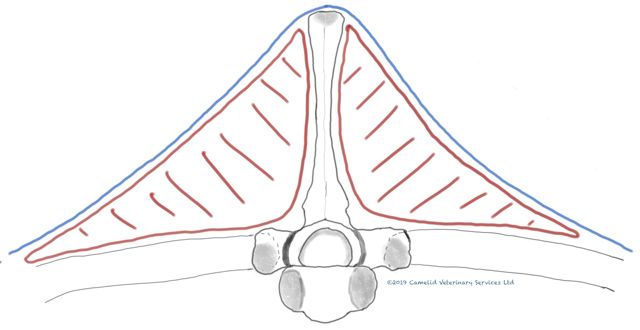
BCS 4/10, slightly thin. Ribs are easy to feel. 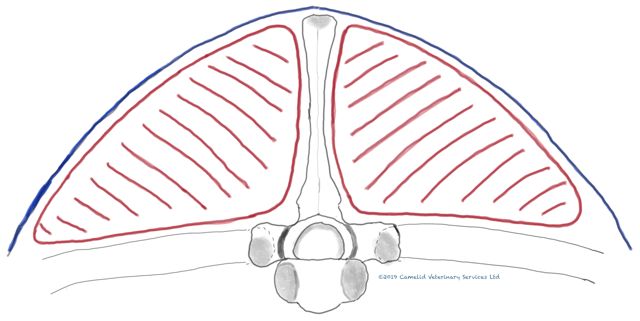
BCS 6/10, Ideal. Slightly rounded profile, ribs palpable but feels healthy. 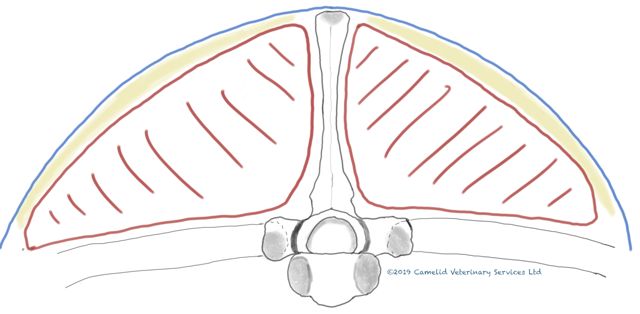
BCS 7.5/10, Overweight. Have to palpate more firmly to feel ribs. Will also have fat padding under the tail.
